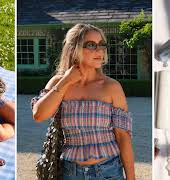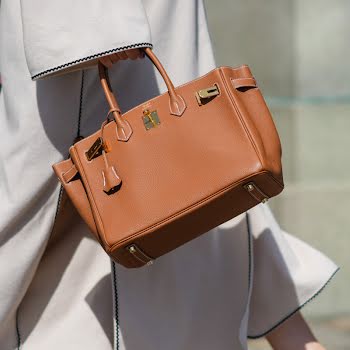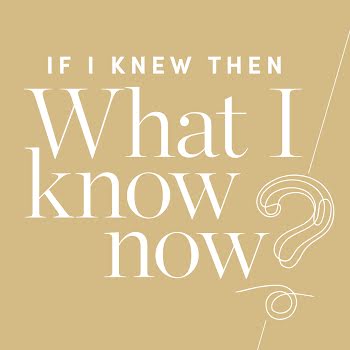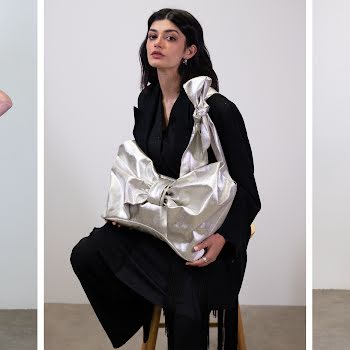How the luxury market has changed and why it’s still booming
By Joanne Hunt
12th Dec 2023
12th Dec 2023
Despite high inflation, employment uncertainty and looming recession, Irish affluent consumers are still buying luxury goods - from designer bags, jewellery and high-end cars to property and collectables. Is this being driven by a ‘life is short’ mentality or something else? And what is the future of the luxury market?
Rising inflation and interest rates have meant a cost of living crisis for many, but bigger food and energy bills are not impacting everyone. A surge in the value of luxury brands globally means, despite gloomy economic predictions, the luxury market is, so far, weathering well.
According to data, affluent consumer spending remains high and those with money are continuing to take comfort in buying “lovely” things.
“Higher income consumers are definitely feeling less impacted by the current economic crisis and they are three times less likely to see themselves as financially worse off this time next year than lower income consumers,” says EY’s Colette Devey.
When it comes to spending on ‘luxury items and indulgences’, only a third of high income consumers say they will spend less than they have done up until now, according to EY’s global consumer sentiment index. Another third say they will spend the same, while the rest say they are likely to spend more, according to the survey taken this autumn.
Heritage brands
Their consumption is considered, however, says Devey. “People may be more inclined to invest in something that will keep its value, an item that they will hold on to for a period of time.”
Higher income consumers are three times less likely to see themselves as financially worse off this time next year than lower income consumers.
“During challenging economic times, more affluent consumers gravitate towards heritage brands that provide a source of solace, comfort, and continuity,” says Martin Guerrieria of Kantar BrandZ. Indeed luxury brands have continued their growth despite economic uncertainty, according to Kantar data published this summer.
It has been a year of record profits for some of the biggest designer names. Louis Vuitton tops the Kantar BrandZ Most Valuable Global Brands 2022 report as the most valuable luxury brand. Best known for its distinctive handbags and luggage, the french fashion house has a brand value of $124.3 billion, up 64%versus 2021.
“In times of crisis, the well off are taking comfort in what is familiar.”
Hermès is the second most valuable luxury brand in the ranking – one of its distinctive, highly recognisable silk scarves can set you back €540. Its brand value has increased by 73%to $80.3 billion. Luxury watch, jewellery and fragrance maker Cartier is the fastest-growing brand of 2022, with an 88%year-on-year increase in brand value. Indeed these luxury brands are leveraging their elevated reputations and pricing power in ways few other brands can, according to the report.
‘Distinctive identities’
“Louis Vuitton and Hermès continue to capitalise on their recognisable assets to reinforce distinctive identities. Clear and consistent deployment of key logos, patterns, and products over decades has built clear brand identities for these luxury players,” says Guerrieria. In times of crisis, the well-off are taking comfort in what is familiar.
This week (November 14), Estée Lauder is nearing a deal to buy Tom Ford for about $2.8 billion, including debt. A deal between the two brands would highlight the strength of a luxury fashion and cosmetics market that continues to show itself to be resilient in the face of rising inflation and supply chain disruptions. For New York-based Estée Lauder, which sells cosmetic brands such as MAC, Clinique and Aveda, the acquisition of Tom Ford would be its biggest and latest in a series of transactions, including taking full control of Canadian beauty group Deciem for about $1 billion in 2021.
A deal between Estée Lauder and Tom Ford would highlight the strength of a luxury fashion and cosmetics market that continues to show itself to be resilient in the face of rising inflation and supply chain disruptions.

Post-pandemic behaviour
Post-pandemic, Irish consumers clearly have a taste for luxury. The parent company of Brown Thomas and Arnotts, stockists of these and other luxury brands, posted record pretax profits of €8.94 million last month [October]. Accounts show that revenue surged by €95.8 million, or 61%, from €157.8 million to €253.6 million in the 12 months to the end of January this year [2022].
“There is possibly a ‘life is short’ mentality to this kind of growth.”
Yes, the economic outlook has dampened in the intervening months, but the retailer is betting the appetite for luxury amongst at least some of its customers has not. What do Brown Thomas shoppers really want for Christmas? A Prada bomber jacket for €4,500 or a Loewe candle for €320, according to its fashion director’s Christmas wishlist.
Fast cars
Scarves, bags and perfume aren’t everyone’s thing. For some, it’scars. While overall new car registrations in Ireland this year are still 10% down on pre-Covid levels, not everyone has held back on buying wheels.
Demand for luxury cars in Ireland so far this year has been strong, according to auto data company Cartell.ie. It defines luxury car brands as the Bentley, Aston Martin, Porsche and Maserati marques. Near or near new sales of these cars for the 2022 registration year to date total 270. “This is the highest we’ve seen these brands in terms of demand since we started looking at these figures,” says Dr John Byrne of Cartell.ie. If you include second-hand sales, where vehicles trade for multiples of the cost of a regular family car, the number of luxury vehicles changing hands rises to 871.
The Porsche Cayenne is the most popular car in the new/nearly new market this year, says Byrne. The Cayenne S Coupe Platinum edition will set you back a cool €160,100. But then it does have a leather interior, a pollen filter and automatic climate control. The Porsche Panamera is the next most popular. Buyers in Ireland are paying €273,949 for the Turbo S model.
“With so much uncertainty in the current market, it is interesting to see how many top-end luxury cars are in the country”, says Byrne. “There is possibly a ‘life is short’ mentality to this kind of growth,” he says.
Luxury homes
Purchasing a luxury home can be a way for a certain category of buyer to stash some of their wealth in bricks and mortar.
“Amid high inflation, rising interest rates and increased volatility in equity markets, affluent consumers are increasingly making investments in hard assets, notably luxury real estate,” according to Christie’s International Real Estate Mid-Year Luxury Trends Report published in August. The possibility of a recession is top of mind for many high-net-worth individuals, and residential real estate is often a relatively strong performer in such an environment, it notes.
“Amid high inflation, rising interest rates and increased volatility in equity markets, affluent consumers are increasingly making investments in hard assets, notably luxury real estate.”
For those in the market for a high-end home, there are some gems to choose from right now. The most expensive Eircode area over the last 12 months was A94 ‘Blackrock’, with a median price of €720,000, the CSO’s Residential Property Price Index shows. That’s pricey for sure, but the super luxury category is another stratosphere.
In November, Christie’s International Real Estate listed 86 ‘luxury’ properties for sale in Ireland. Top of the price list is Ashurst in Killiney. With sweeping views of Killiney Bay and south to the Sugarloaf, this seven-bedroomed, 10,964sq ft home is listed for €12 million. That includes 4.7 acres of land and a two-bed gate lodge.
Built in the mid 1800s, it has heritage pedigree but with modern luxury. This includes geothermal underfloor heating installed under hand-smoked oak floor boards by Oscar Ono. That’s the brand selected to floor the offices of French fashion brand Christian Dior.
Who in Ireland can afford a €12 million property? The off-market sale this summer for more than €12 million of St Kilda, a home on Sandycove Avenue East, in south Dublin shows that buyers are out there. In March, 73 Ailesbury Road in Dublin’s embassy belt sold for €11.7 million.
Trouble ahead?
A survey by the Luxury Institute earlier this year, whose membership includes luxury goods and services firms, found that while the industry is expecting a downturn, the market should “withstand negative economic forces”, thanks to the “resilience of affluent consumers”.
The institute predicts sales of fashion and leather goods will feel the effects of inflation the most, as will expensive cars. Watches and jewellery may only experience a “medium-level impact” because they are seen as investments.
The cutting of prices is unlikely to be on the agenda. As Bernard Arnault, chief executive of LVMH Moët Hennessy – Louis Vuitton has said: “If you don’t put your products on sale, consumers feel they are buying something that retains its value.”























